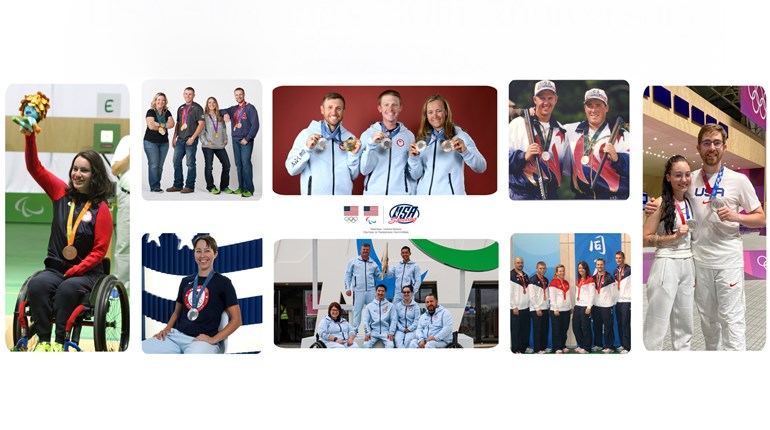
This year’s NRA World Shooting Championship, presented by Walther Arms, featured 12 different shooting disciplines (or variations thereof) spread across the spacious ranges of Camp Atterbury, Indiana, this past April. Shooting any big match for any sport will bring together like-minded people with similar interests and experiences from the same discipline. This match combines them all.
A unique event, this tournament attracts many shooters from different backgrounds—some even traveling from as far as Australia—to compete. I was the only service rifle shooter in my squad, which was composed primarily of three-gun and action shooters. While the match wasn’t perfect and there are still some growing pains after a five-year hiatus and new military base location, the foundation is still there: declare the world’s greatest shooter by placing everyone on a level playing field.
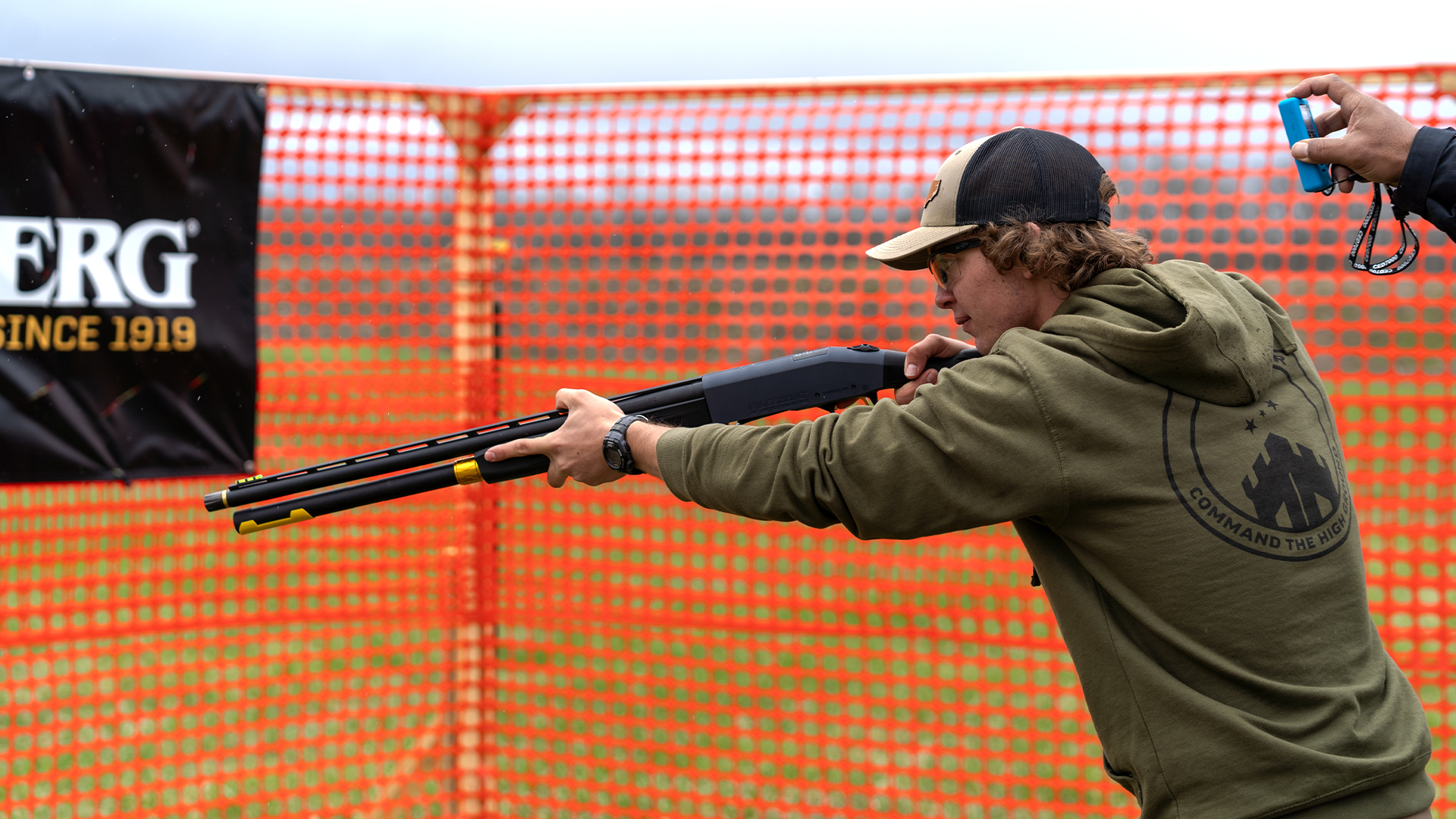
Competitors are issued the same factory guns and ammunition. No one uses their own firearms and the only things you can adjust are magnification and focus—no sight changes. This puts everyone in largely the same uncomfortable situation—general unfamiliarity. Each competitor is given two sighting shots with each gun. This sounds easy, but it can be difficult to effectively use these shots. They provide a feel for the gun, but it’s often impossible to tell exactly where the guns are hitting. This was my biggest point of frustration with the match, a sentiment shared by many other competitors.
The match begins with a competitors’ brief, where dignitaries give compelling speeches about the match and thank the numerous sponsors who make it possible. I was also impressed by Indiana First Lady Janet Holcomb. While I’d seen her picture before, it was refreshing to hear her speak. She even shot some of the match alongside the staff.
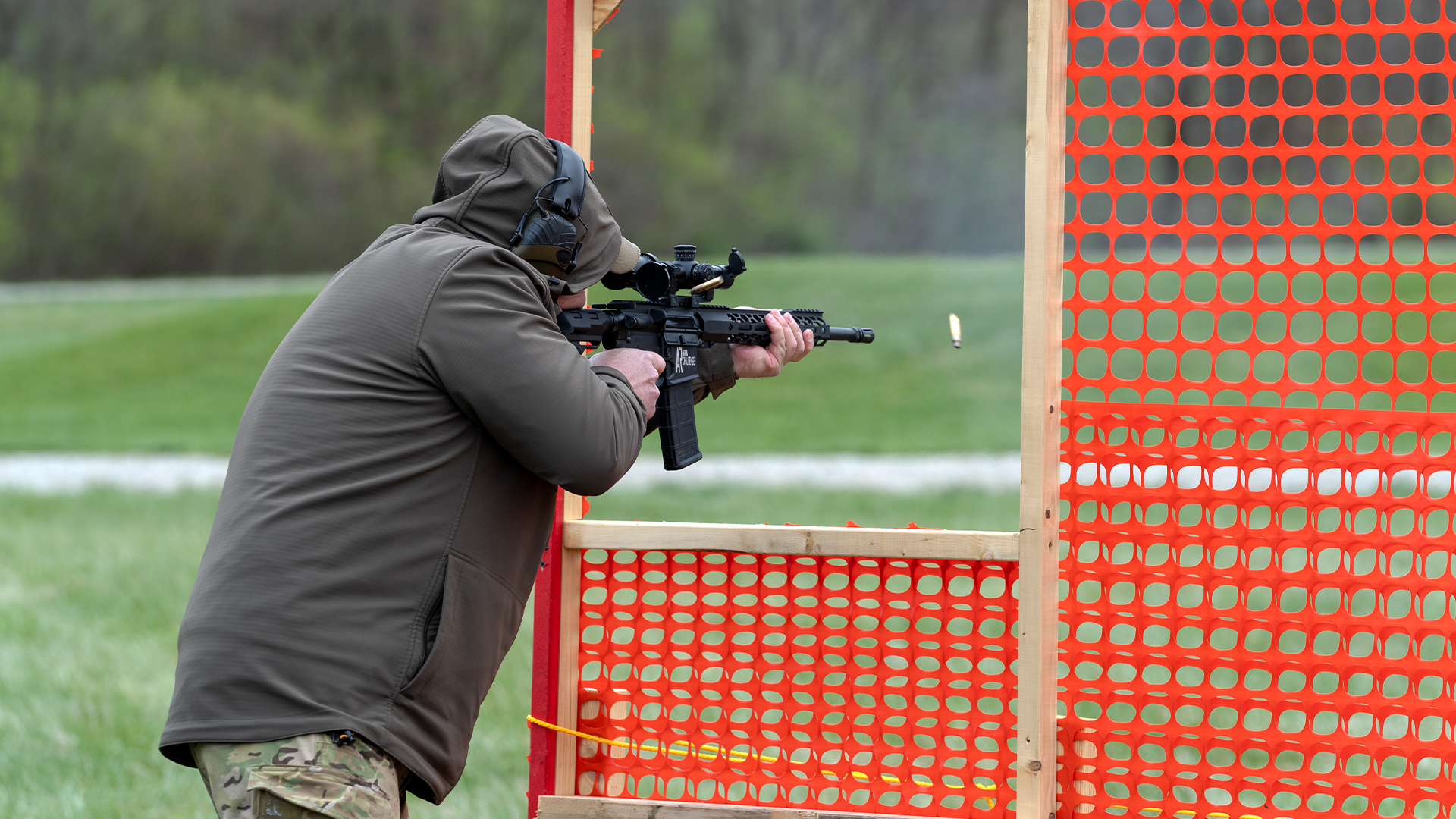
Practiscore self-squadding opened well before the match, allowing competitors to choose who to shoot with and when. Two time options were available: a.m.-p.m.-a.m. squads and p.m.-a.m.-p.m. squads over the three days of shooting. If a squad was scheduled to shoot the main match in the morning, they could shoot the side stages in the afternoon and vice versa. Although the side stages had prizes, they existed just to provide everyone some extra trigger time, with no bearing on official scores.
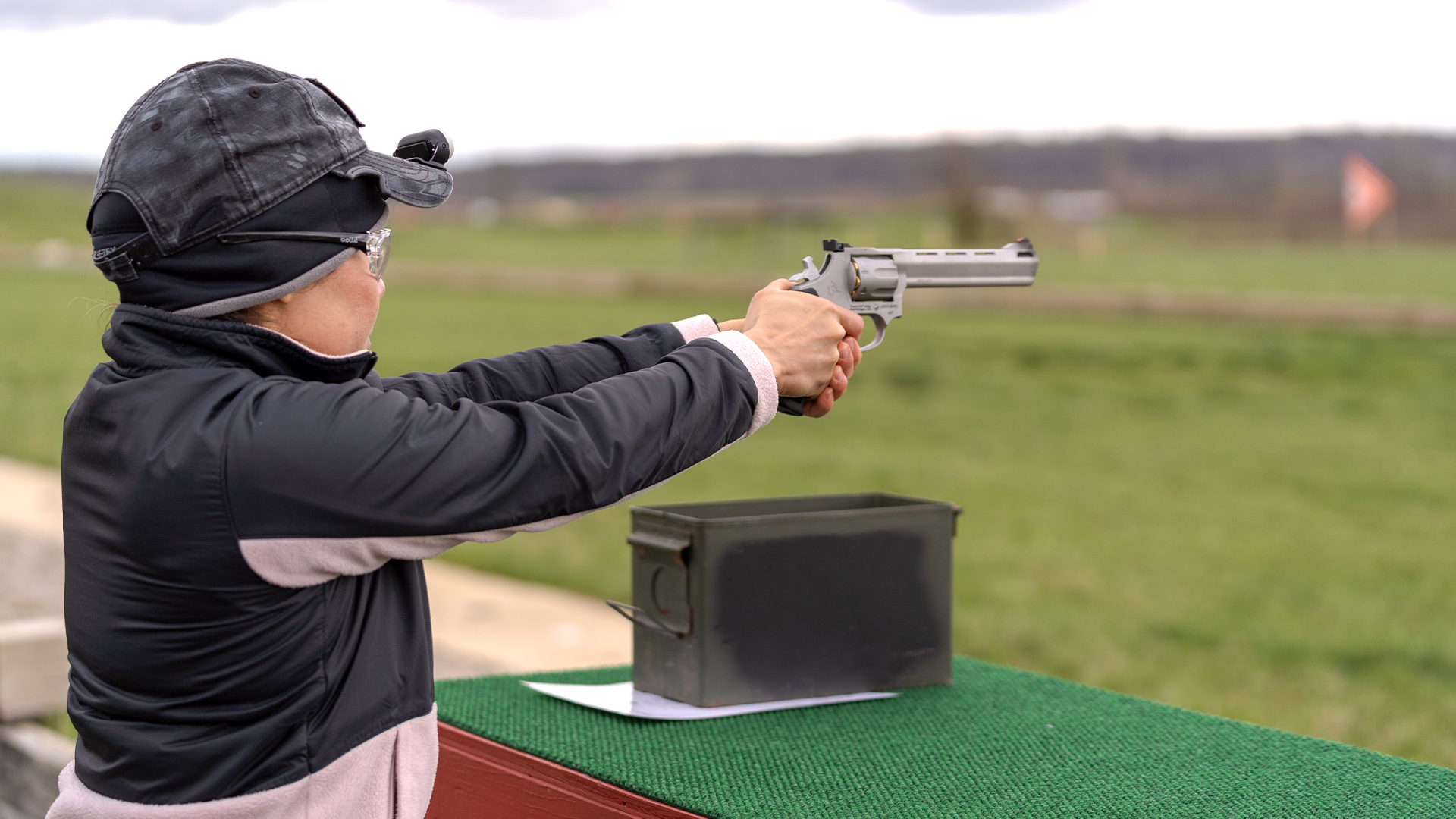
Such an event wouldn’t be possible without sponsors and volunteers. The NRA World Shooting Championship holds a staff match alongside the Professional and Amateur divisions. This comes with its own prize table, bragging rights and gives dedicated volunteers an opportunity to participate. The weather was arguably the biggest obstacle for match staff and competitors—torrential rains and storms ended the staff match early and made it difficult to keep stages intact. The first two days of damp, frigid Indiana weather had everyone scrambling to find ways to keep warm, stuffing handwarmers everywhere and stowing hands in pockets between shots where possible. (Gloves were not provided by match staff, so they couldn’t be worn while shooting.)
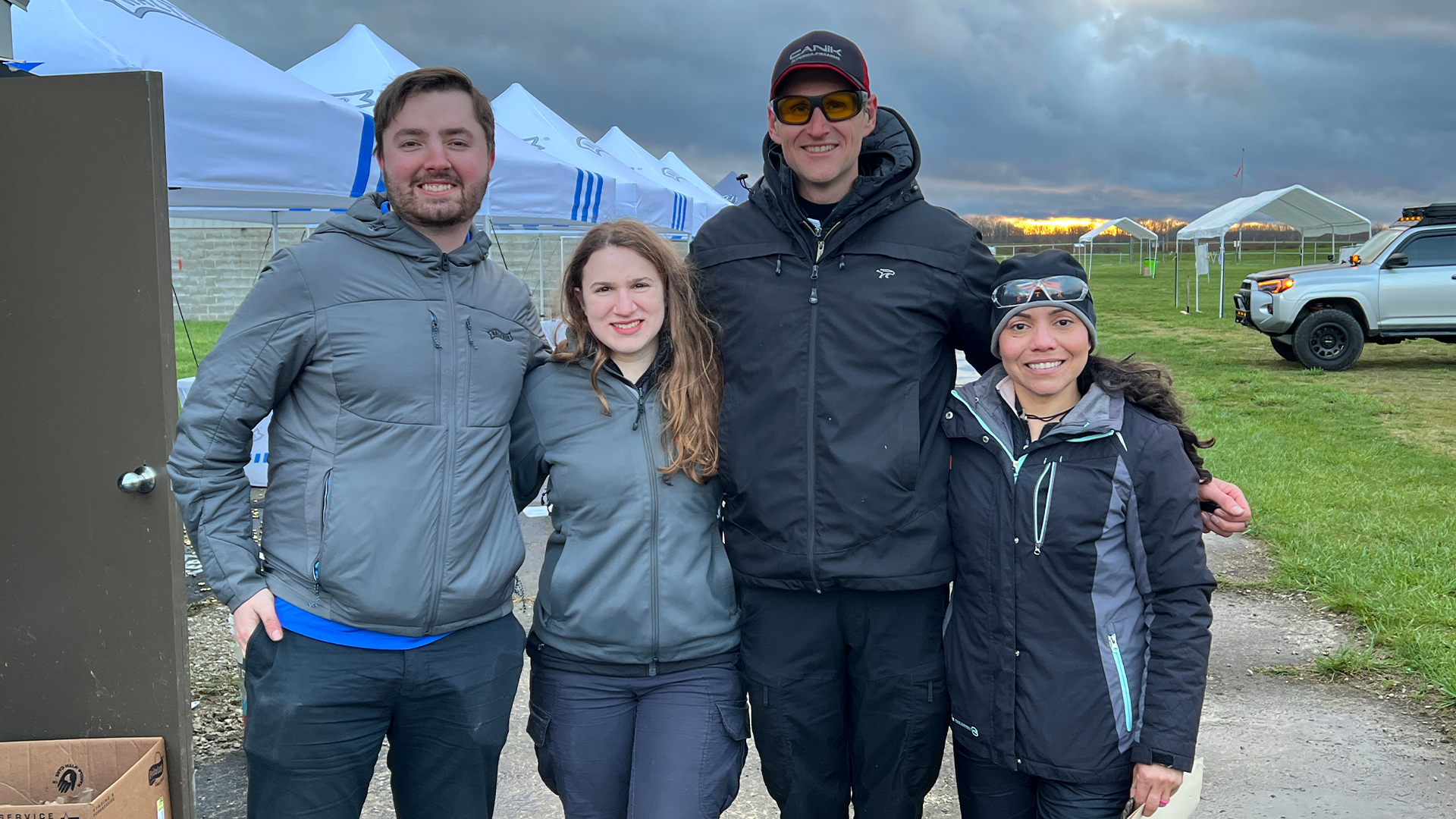
I hadn’t experienced shooting in a squad until this match. With the right people, it was incredibly rewarding. As we froze together, we also bonded. I had the opportunity to learn from top shooters such as Gabby Franco and Nils Jonasson, as well as talk about my favorite disciplines and areas of expertise. With so many different types of shooting, everyone saw their strengths and weaknesses.
My favorite stage was Precision Air Rifle. Out of all 12 stages, it was the most familiar to me and the Walther LG400 Bluetec .17-caliber air rifles are a joy to shoot. They have great triggers and Olympic air rifle gold medalist Will Shaner helped run the stage. By the end of the match, everyone was talking about the LG400 rifles. (They were some of the first things to leave the prize table at the awards ceremony.)
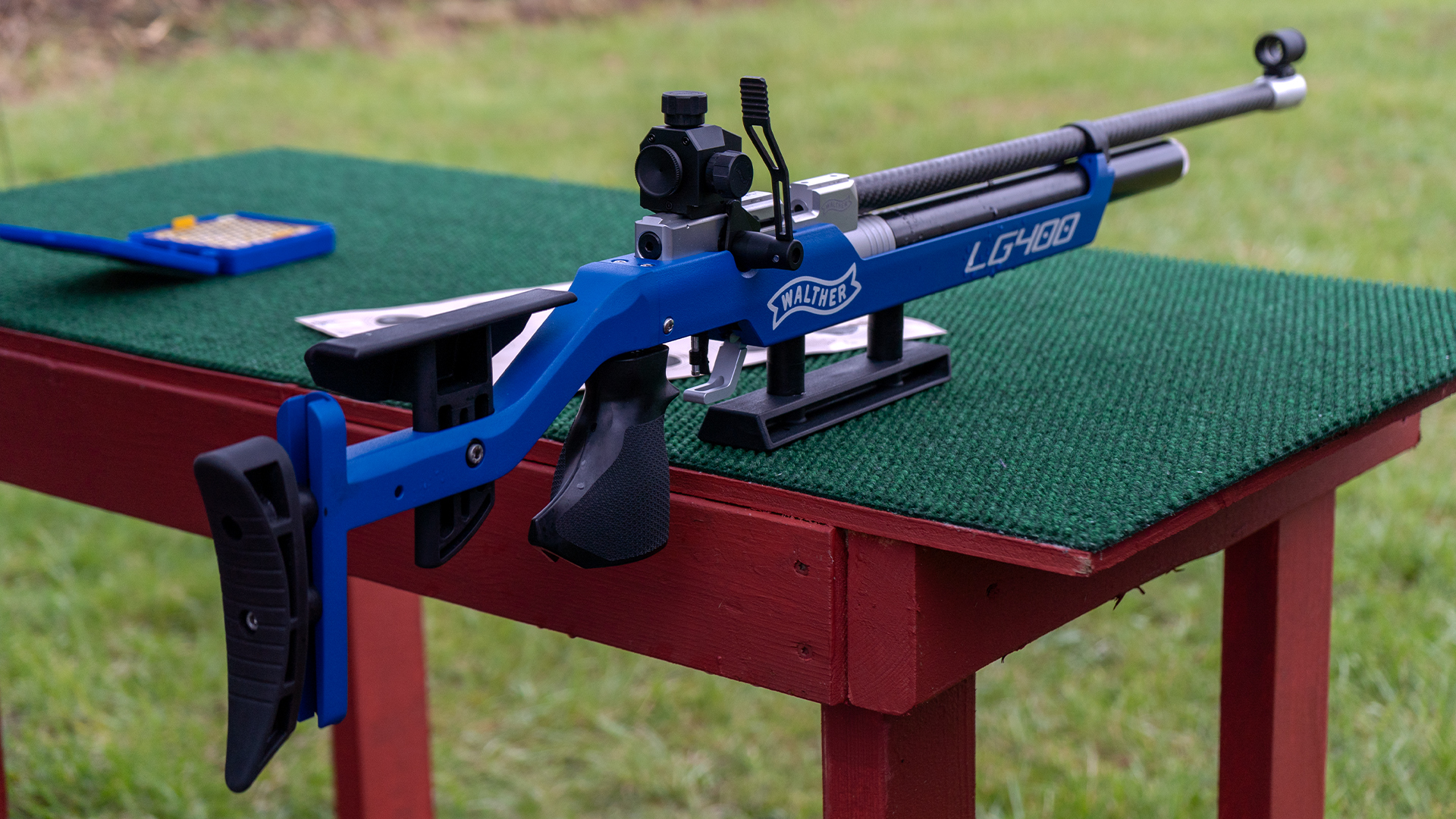
Surprisingly, my other favorite stages—NRA America’s Rifle Challenge, Three-Gun and Cowboy Action—involved movement, which is something I try hard not to do in High Power. I was apprehensive about running with a firearm. I’d done it once or twice before but it always felt wrong, like running with scissors. The other members of my squad reassured me and I did decently well, though I was much slower than the rest of the crew. These stages made me think about shooting different types of firearms in different ways than I normally would.
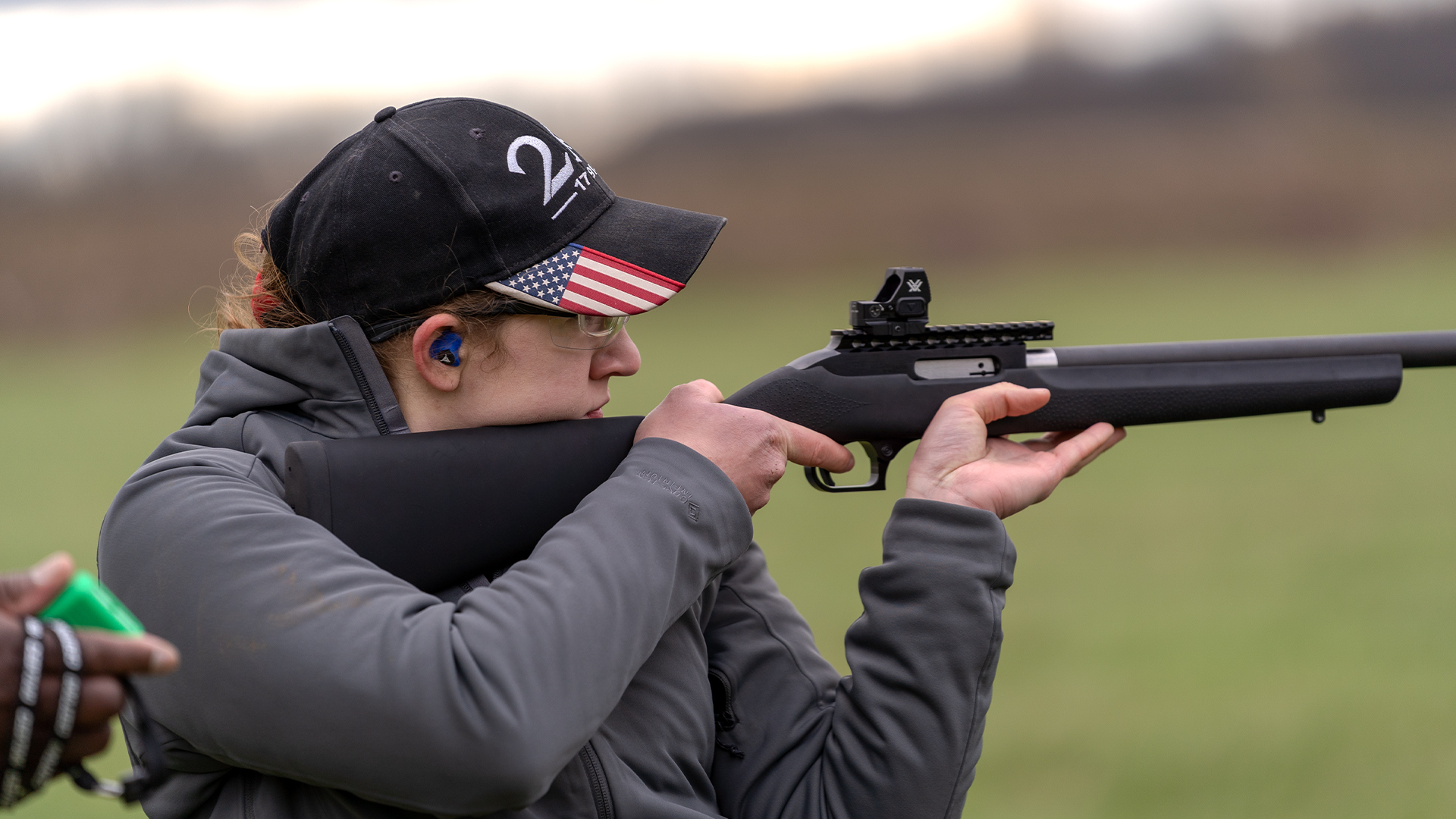
As a Service Rifle shooter, the ACME Machine AM15 at NRA America’s Rifle Challenge was incredibly familiar, although navigating through a door and trying not to fall in the mud was new to me. One shooter had an epic wipeout but retained control of the gun. Another lost a shoe and finished the stage in socks. At Three-Gun, firing a Mossberg JM Pro 12-gauge shotgun at a static clay target was a satisfying experience, as well as the following dash to the Canik Rival-S pistol. I had no issues with any of these guns. Cowboy Action was completely foreign to me, but extremely fun. Shooters began sitting down and yelled “Wet my whistle!” before firing the first shot under time constraints. This was hilariously awkward. Though only a short introduction to Cowboy Action, I enjoyed shooting the Henry Big Boy .357 revolver and rifles with an emphasis on speed.
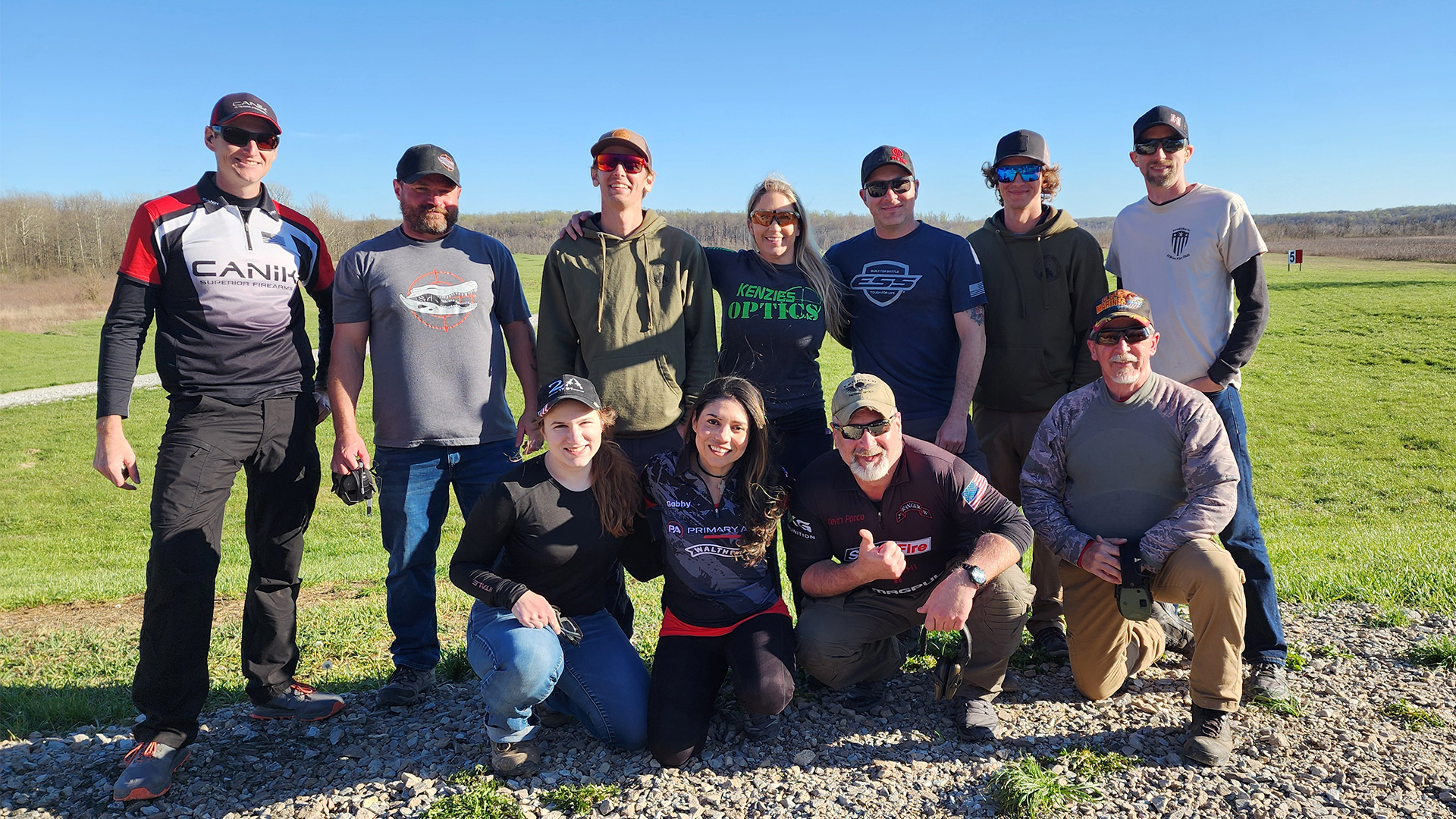
My squad struggled with the Sporting Clays and FITASC stages. Shots were extremely challenging and even the more talented shotgun shooters had to fight for every broken clay. This year’s winner Brian Shanholtz and his son Cole (High Junior) went in with especially high hopes.
“I’ve shot trap since I was kid, and sporting clays and skeet and the whole nine yards,” Brian said. He also coaches shotgun for Cole’s junior trap team. “Typically for the past World Shoots, that has been where I’ve excelled … I shoot with Cole all the time shooting trap and shotgun because that’s what he likes.”
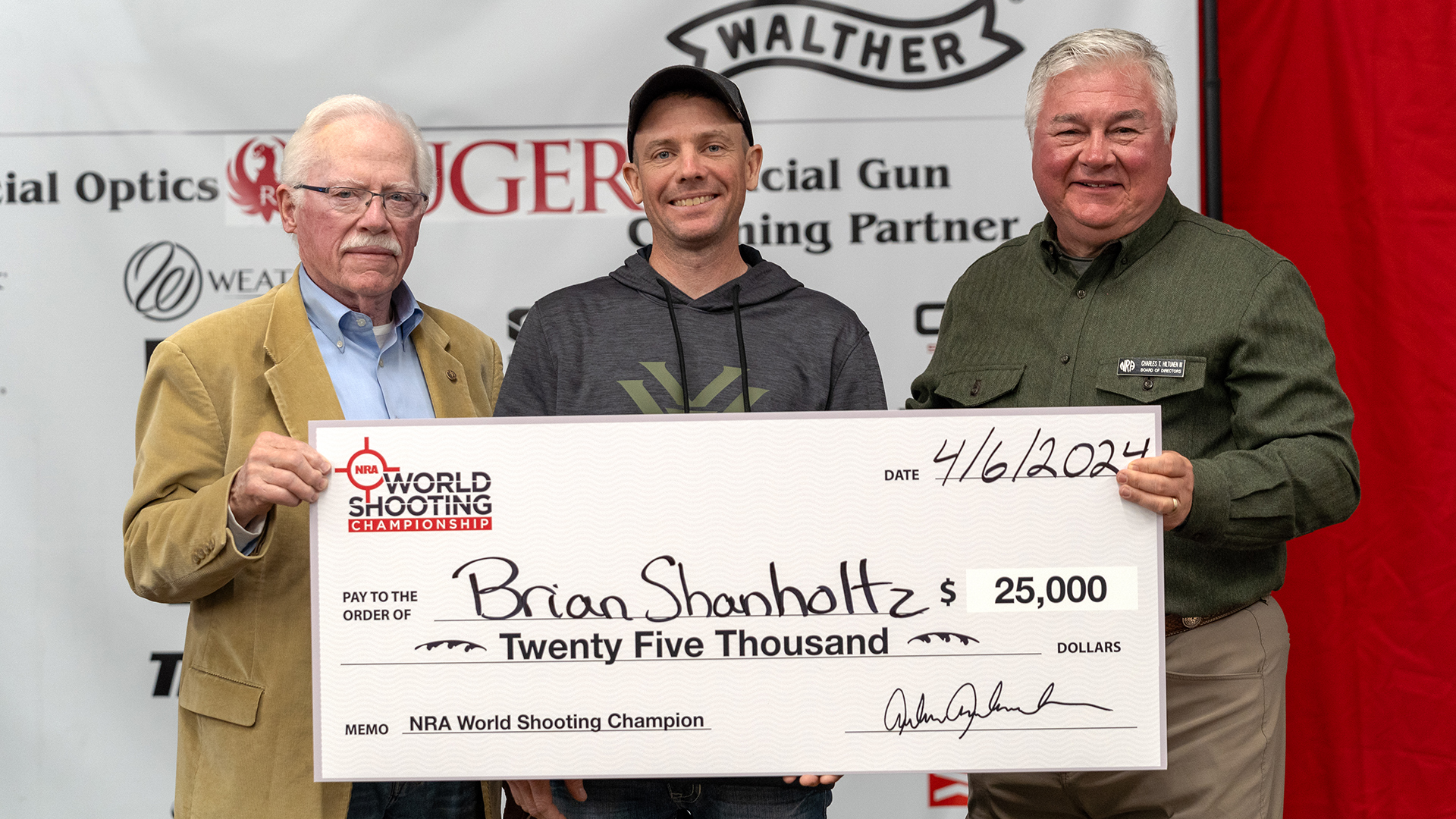
Both father and son are on the 2023 Maryland State Trap leaderboard.
“We usually are good because that’s our sport but we did not do well out there. It was extremely challenging. The course was challenging enough and we really got handicapped by some of the choice of firearms and the weather,” Brian said.
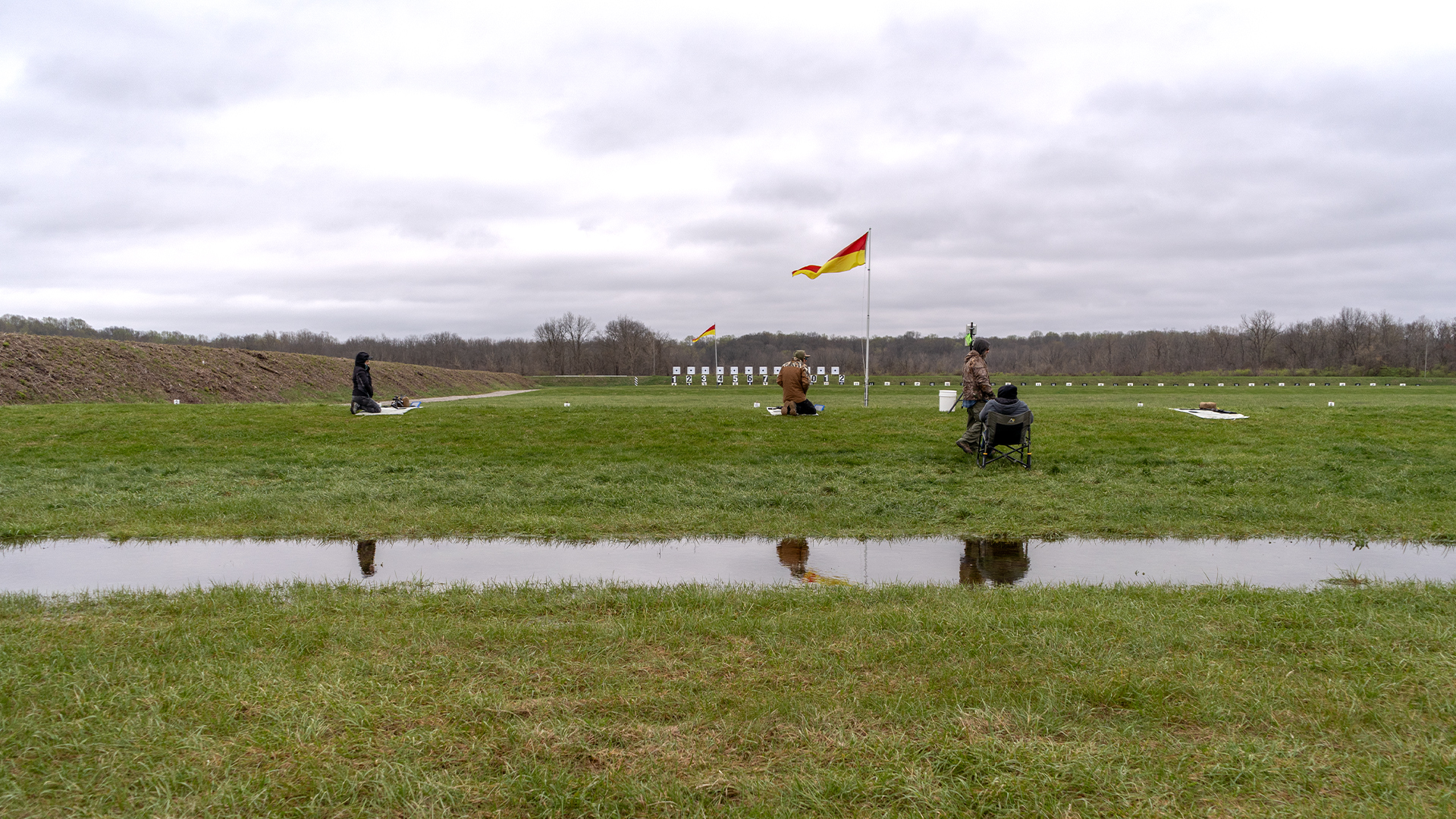
I initially found the name “World Shooting Championship” a bit confusing. Most “world” competitions require a selection process, with only a few making the cut to head overseas and represent their country. This tournament is open to anyone from around the world at any skill level. There are two divisions to promote this, Professional and Amateur, and competitors compete amongst each other in mixed squads. This match offers the unique opportunity to shoot alongside and learn from legends like Jerry Miculek, Bruce Piatt and other big names, no matter who you are. While I’ve been fortunate to have met several top shooters, this was the first time I was shooting on a range with them. In the hours spent waiting on final scores, competitors mingled in a spacious building with a catered dinner provided by NRA, offering even more opportunities to connect and learn from one another.
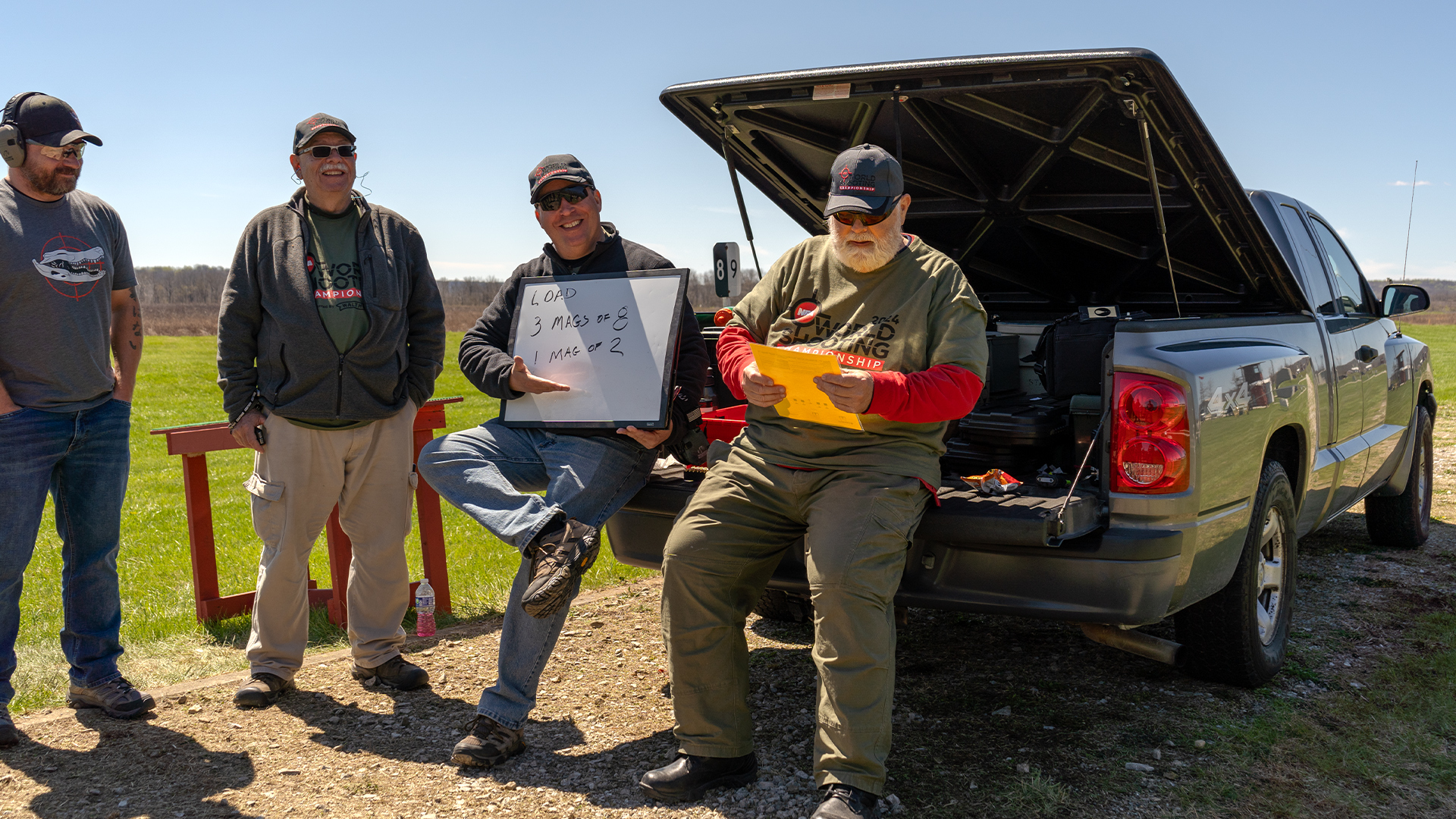
With 12 different disciplines and stock guns, no one person was a true master of them all. Generous sponsorships allowed for big checks to be given out to the top shooters. High Lady Lanny Barnes, second place Nils Jonasson and third place and former World Shooting Champion Greg Jordan are no strangers to the podium. But, no one knew much about the overall $25,000 winner Brian Shanholtz. I talked to Brian about his big win and his son Cole’s High Junior finish.
“I certainly didn’t expect first, and the whole match I was more worried about my son and concentrating on his match,” Brian said. “I’m just a regular guy. I’m an electrician … and pretty dedicated dad.” His 2024 goal was top five as the highest he’d ever placed was seventh in the Pro division. Brian has competed in the NRA World Shooting Championship every year since its inception and progressed to Professional division after winning the Amateur title in 2015, which landed him a Vortex sponsorship. He attributes his first year success to many years spent competing in the NRA Youth Hunter Education Challenge.

Brian was a Precision Rifle Series competitor for a few years, but stopped as his kids grew older, until Cole took an interest. Father and son trained for the 2024 NRA World Shooting Championship and it paid off.
“I’m happier about [Cole’s win] than I am winning the whole thing myself,” Brian said. “That was so cool, especially for his first year … He was super nervous about it building up to it from the time we left and even when we were out there shooting … [it was an] indescribable experience to have us both up there on that stage.”
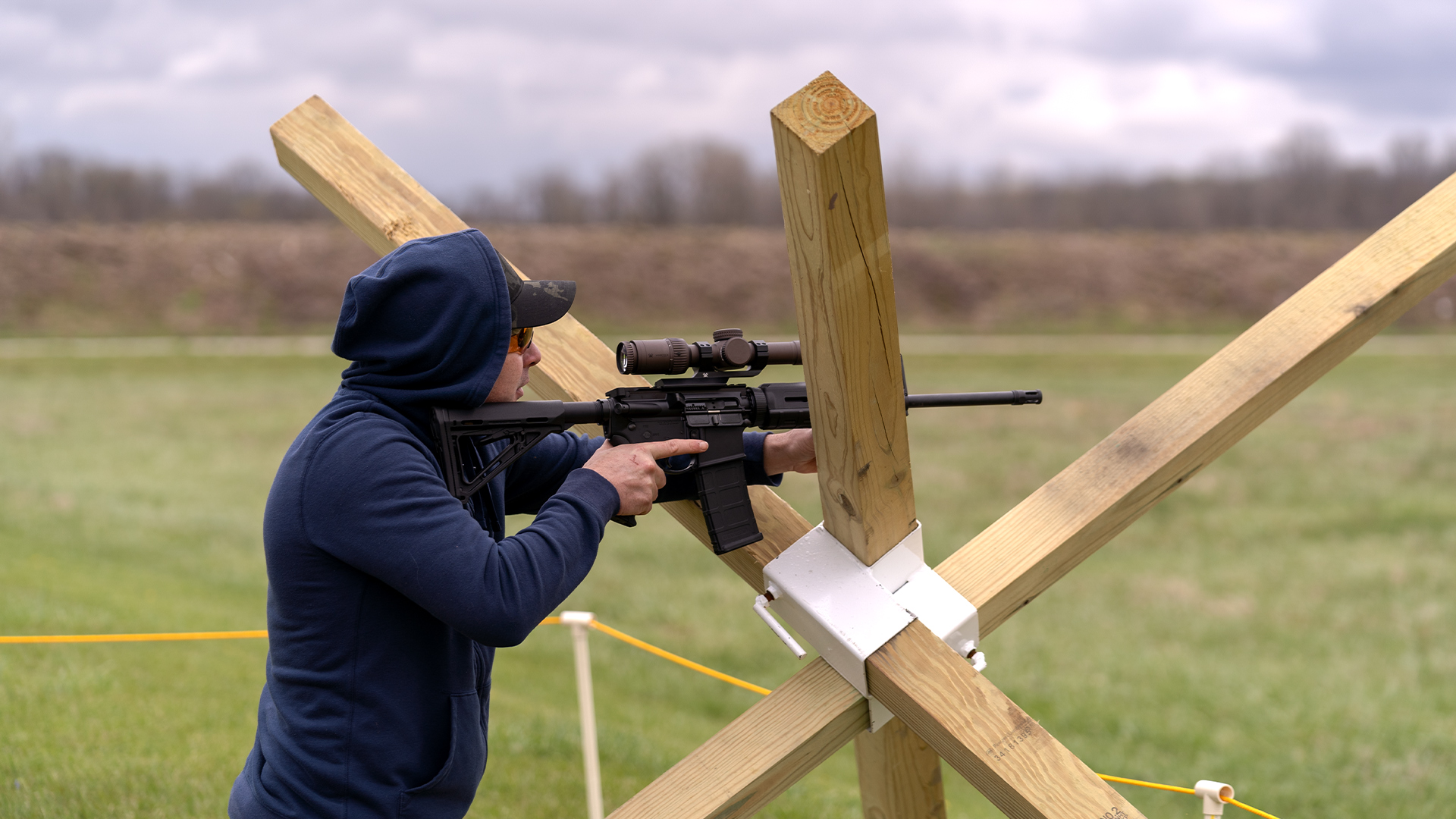
Attending the NRA World Shooting Championship is not only a fun experience with a generous prize table for all competitors, but it also highlights the unity of the gun community. World champions, Olympians and shooting enthusiasts endure bad weather, made new friends and learn from one another. While waiting for awards, a spontaneous singalong of “Sweet Caroline” was enthusiastically picked up by the packed hall of competitors. Though it only lasted a few minutes, this group performance encapsulated the entire match—people coming together from different backgrounds and places to do what they love.















